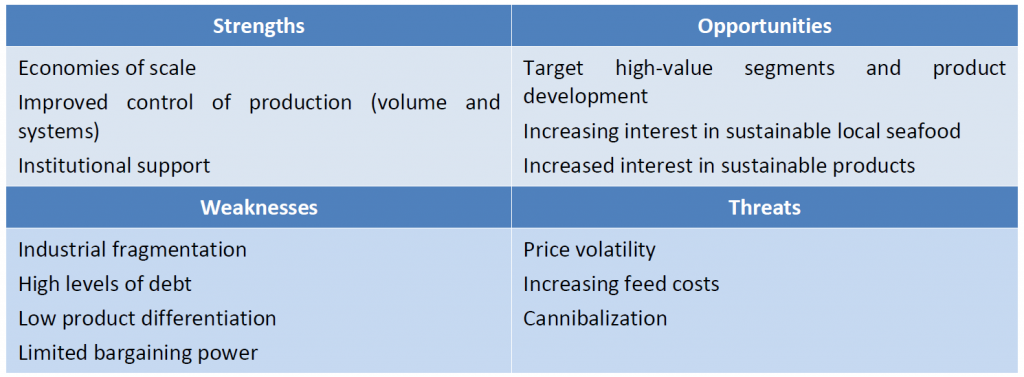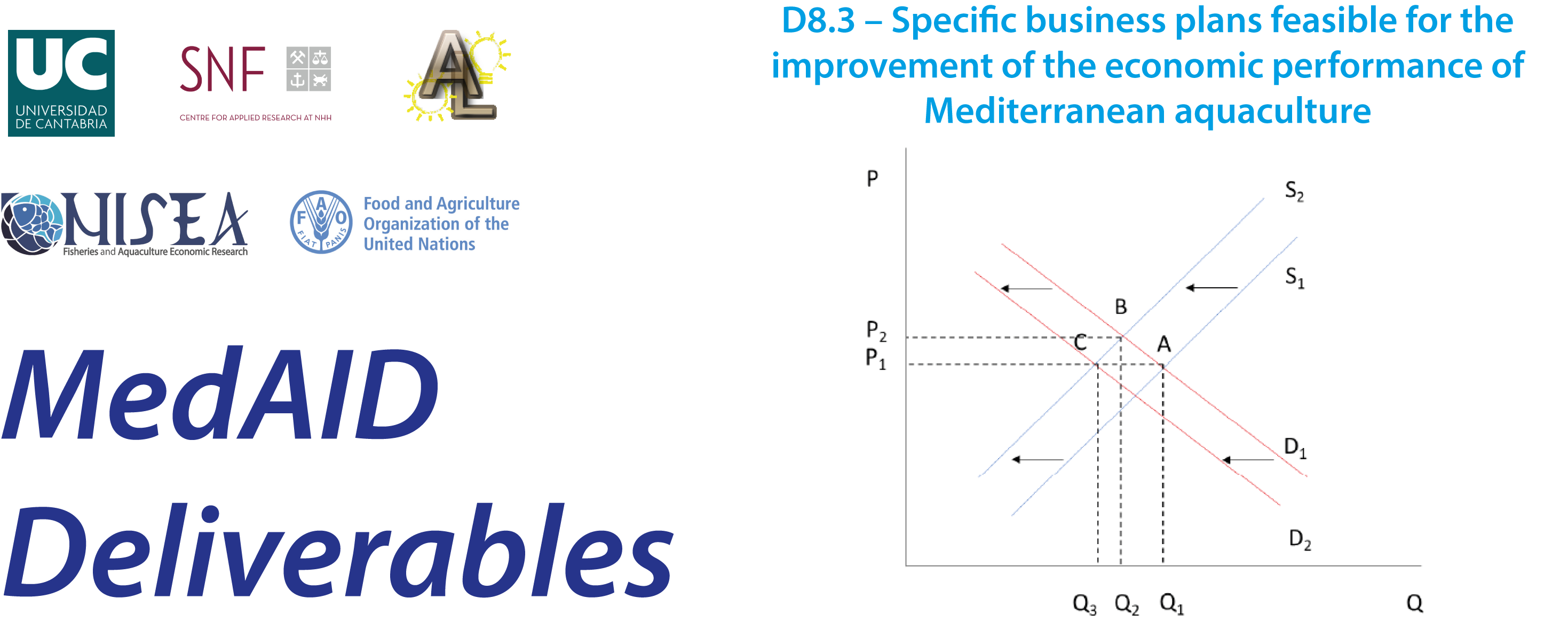This task develops the strategic implications in the form of guidelines for improving market returns, based on the findings of WP 6 tasks. These tasks covered topics related to economics of production, market dynamics, communication and organizational areas. The results from all these tasks enabled the identification of the industry’s internal strengths and weaknesses and external opportunities and threats. The resulting items identified in the previous tasks are described in a SWOT diagram.

All these results are referred to the dominant economic and market conditions that prevailed when the tasks were implemented. The outbreak of Covid-19 and the following shocks caused by the spread of the pandemic have disrupted both the economy and the markets. The impacts on the business of Mediterranean aquaculture are still ongoing and not clearly assessed. However, the main mid-term trends can be identified. All costs are expected to keep rising. Among these, labour and capital costs affect companies’ productivity. Meanwhile, the costs of raw materials, feed and livestock are also expected to keep on rising, affecting the efficiency of production. All these cost increases will have an impact on the companies’ profitability. Farmers will have to increase their prices in order to sustain the profit levels which enable them to keep on producing fish, repay debts and the investment rents. However, in a market with an elastic demand, a rise in the price will be followed by a contraction in demand, reducing companies’ sales and potentially their incomes. Indebtedness and liquidity will be critical factors in stating whether a company is in position to undertake new strategic developments.
Based on the SWOT diagram included above a set of strategic recommendations in the field of production, marketing and industrial organization are discussed. The proposed strategic lines are as follows:
• Production and management. Improvement in feed utilization, learning by doing and knowledge transfer.
• Industrial organization. Alliances along the supply chain, concentration of supply, clustering of enterprises and more vertical and horizontal integration in the industry.
• Marketing and communication. Market segmentation, product differentiation and proactive communication strategies.
The implementation of such strategies will require new investments. Farmers must be in a safe financial position if they want to face the required investments. Furthermore, business profitability must enable investments without compromising the financial position. In a scenario of increased costs and decreased income -as expected in the short term, until the pandemic economic disruptions may reach an equilibrium- only companies with low indebtedness and high liquidity may be in the position to successfully implement a differentiated marketing strategy.
Access to the full deliverable

